Ok bonzo75, I was able to find one amongst my collection that you should be familiar with, just for you:
Hi thanks for this. You had previously recorded a Scheherazade. Can you do a before and after?
Ok bonzo75, I was able to find one amongst my collection that you should be familiar with, just for you:
Ok, can’t do another before, but will do after so you can compare (if you can locate the earlier recording).Hi thanks for this. You had previously recorded a Scheherazade. Can you do a before and after?
Ok, here goes, but I am not technical. I also recorded the second recording louder than the first (trying to get realistic listening levels). Likely caused distortion.Hi thanks for this. You had previously recorded a Scheherazade. Can you do a before and after?
Ok, here goes, but I am not technical. I also recorded the second recording louder than the first (trying to get realistic listening levels). Likely caused distortion.
first recording: original crossovers
second recording: Pete Riggle crossovers
Thanks for the consultation, I will give it my full attention.The second one is quite better than the first . The first is very flat, the second has more dimensions. The midbass fills up better, and the rise and fall and flow has improved too. Sounds quite a different speaker.
Still, considering the investment in your upstream, I am not hearing it to that level. Though surely you can stay engaged with music on this. I think given your analog investment you are not that budget constrained. for your room, for the same size of speakers, in future look at audionec evo 2. They will work with your current electronics.
In the meantime if you want to improve on the Altecs, also try Markus Klugs wooden horns. He accepts returns so you will not lose any money. Not sure how much better it is, but you can try a 1505 multicell from him that will open up your sound more. You should have 2.5 feet from the sidewall for that. Also try to see how the play straight on instead of toe in, because on video sound seems a bit less open. You might then need to bring them closer together.
Beautiful sound! I've just started a dialogue with Pete Riggle to have him build crossovers for my Model 19's. Did you get the super tweeter option? I'm thinking I'll get it, but not sure I'll ever use it.Ok bonzo75, I was able to find one amongst my collection that you should be familiar with, just for you:
I did get the super tweeter circuit but haven’t used them yet. I don’t think the original Hiraga circuit had a super tweeter circuit (but not positive). I am also not sure if the upper end is cut off with this circuit requiring a super tweeter to get it all or not.Beautiful sound! I've just started a dialogue with Pete Riggle to have him build crossovers for my Model 19's. Did you get the super tweeter option? I'm thinking I'll get it, but not sure I'll ever use it.
be prepared to be amazed how much impact aligning the tweeter in time/phase has! moving an inch IME is a HUGE range considering I typically adjust my tweeter by something like 0.1mm or less when finetuning.I did get the super tweeter circuit but haven’t used them yet. I don’t think the original Hiraga circuit had a super tweeter circuit (but not positive). I am also not sure if the upper end is cut off with this circuit requiring a super tweeter to get it all or not.
Pete is fairly adamant that the super tweeter needs to be mounted with the voice coil in vertical alignment with the other voice coils to ensure phase alignment. He also swears they improve bass and soundstage if included.I am replacing my treble horns with a large double array of wooden horns built by Markus Klug in Germany. They will sit on top of the bass cabinets and completely block the front so that there is no room to fit a super tweeter without some ugly fire truck ladder extension suspending the super tweeter up in the air behind those horns.
What I plan to do instead is place a super tweeter on top of the bass cabinet next to the compression driver but pointing up towards the ceiling (which is angled up and out near 135 degrees) so that the sound from it goes up, spreads and reflects forward to the general listening area). The waves are so short that I think moving the super tweeter an inch forward or backward on the cabinet should allow me to match phase (by ear).
I have just finished reinforcing my bass cabinets and lining the insides with wool insulation. The Klug horns are at DHL in London and will hopefully arrive soon. I will listen without buying and adding the super tweeters first to make sure the changes I have just made remove the apparent phase and timing confusion that Hugo “shuggie” heard when first these crossovers were first swapped in as replacements for the stock crossovers (first video). I heard cabinet resonation then with the deepest wooly bass notes (which was now present whereas before changing the crossovers there was no bass), so have spent alot of time and money to eliminate cabinet distortion (which I believe was the cause of the timing / phase problem that Hugo heard.
I take it you are being facetious, as .1mm equates to .004", about the thickness of a human hair.be prepared to be amazed how much impact aligning the tweeter in time/phase has! moving an inch IME is a HUGE range considering I typically adjust my tweeter by something like 0.1mm or less when finetuning.
The effect will be smaller when firing upwards but still.
if you like to think so I am, yet I continue to adjust my tweeter in such tiny increments if you do not mind.I take it you are being facetious, as .1mm equates to .004", about the thickness of a human hair.
I can get you some interferrometry instrumentation that will allow you to make adjustments in nanometers if you are finding your current adjustment too coarseif you like to think so I am, yet I continue to adjust my tweeter in such tiny increments if you do not mind.
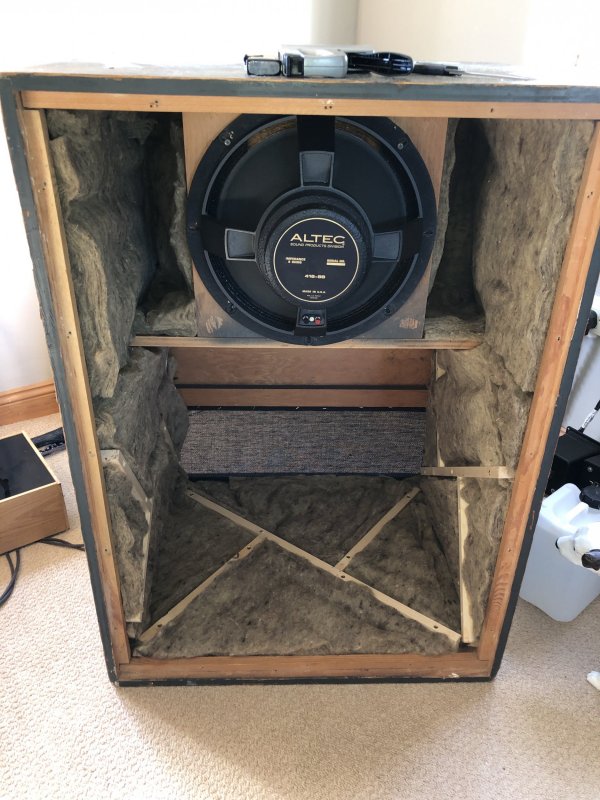
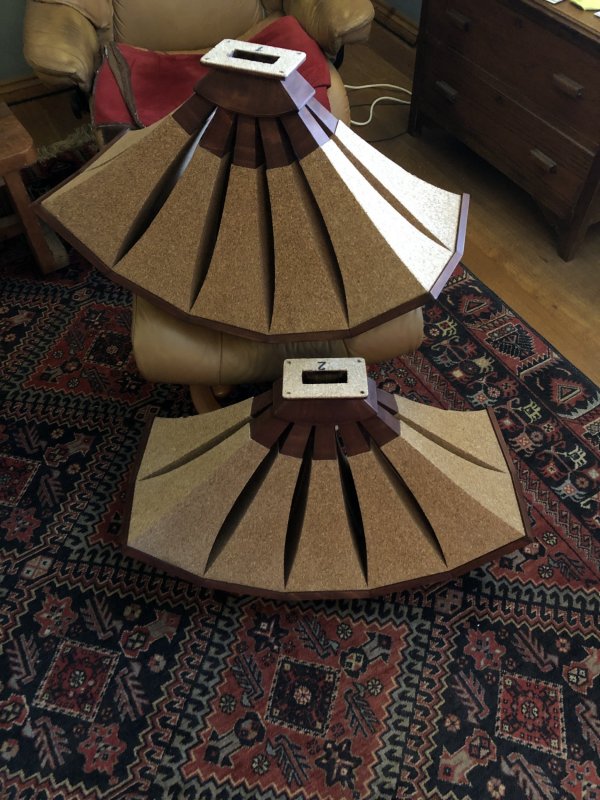
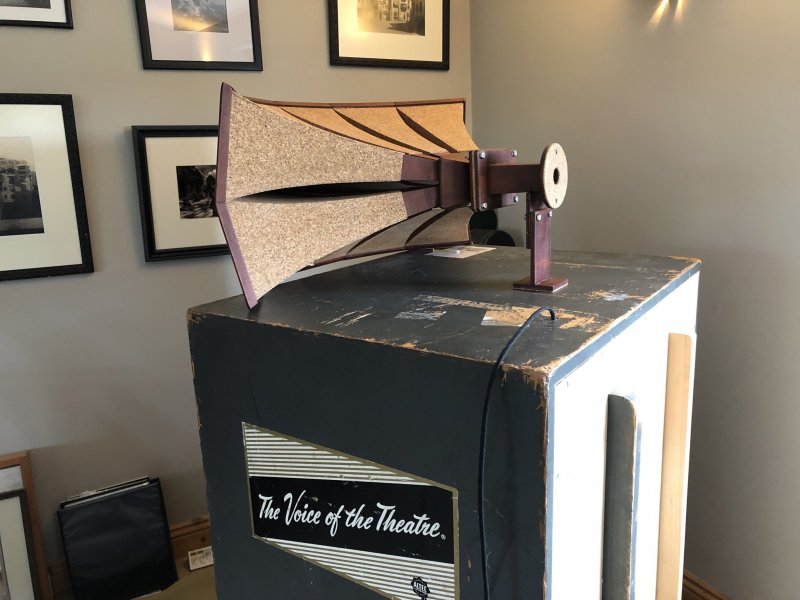
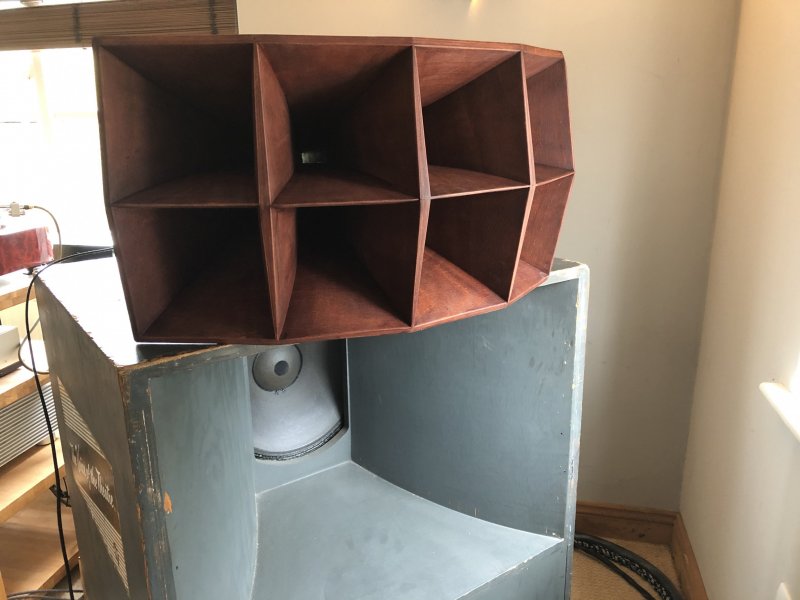
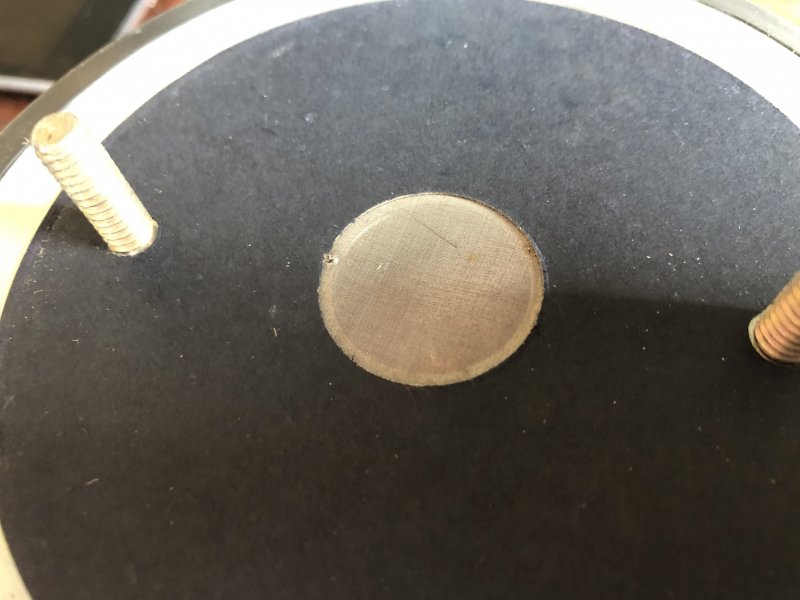
JBL Selenium ST400 super tweeters. According to Pete, they are what sounds best with the crossover circuit section for super tweeters that Pete Riggle built for me.which JBL's did you order?
I can recommend using a sine cap filter on them (provided we''re talking about the same series)
The amount of research and effort you've put into your A7's is impressive. It sounds like you are starting to enjoy the fruits of your labor I take it?Alright, here is an update on my Altec A7 modifications (and rationale).
When I purchased them they were "stock" in the following configuration: Two beat up 825B cabinets with 416-8B Alnico low frequency drivers. They had "rebuilt" Altec N501-8A crossovers screwed to thin ply plates that were screwed over a hole in the back plywood panel of the bass cabinets. There was no fibreglass wool inside as the previous owner removed it, however there was some acoustic foam egg crate that I put behind the bass horns inside. Atop the bass cabinets were two Altec 511B High Frequency horns with Altec 902-85 ferrite compression drivers containing "tangerine" phase plugs.
The sound of these speakers was immediate, fast, less harsh than those they replaced but still not right. The bass was much weaker than I thought should be the case, so much so that I contacted Great Plains audio and asked if perhaps the Alnico magnets needed re-magnetising but he assured me that if I can hear any bass then they didn't need to be re-magnetised.
I then carefully read an article that was first published in the summer of 1993 edition of "Sound Practices" regarding upgrading Altec "Voice of the Theatre" speakers for Hi-Fi. They suggest changing the wire, using compression drivers with Aluminium diaphragms and to avoid the Pascalite or Symbiotik. They also recommend removing the fine-mesh screen sandwiched between the phasing plug and throat, Reinforcing the cabinet with internal braces (2x4's or 2x2's screwed on edge), the inside of the bass horns and outside of the metal treble horns with acoustic mud and other such stuff, and changing the crossovers (best results with active crossovers and dual amping).
I then contacted Great Plains Audio and asked about the new 802-8G "Series II" Alnico compression drivers, if they sounded as good as the original 802's or at least better than my 902's? I was surprised to hear him say "no". The newer "series II" compression drivers, although Alnico, have modern diaphragms/voice coils with different suspension. He assured me they would not sound any better than my ferrite 902's. Hmm?
So my first upgrade was to change the crossover. The Altec crossover used mylar capacitors (I believe) and sounded a bit harsh with absolutely no bass. I replaced them with Pete Riggle "Hiraga" style crossovers which used NOS oil-filled capacitors for a smoother sound. After some waisted time and money on totally unusable audiophile wire, these were eventually wired up to the speakers with Duelund 16G tinned-copper insulated in oil and cotton, closest thing I could find to the old RCA tinned wire (pretty much unobtainable these days). The treble was much smoother, clearer and less harsh. The bass was much bigger and deeper but the deepest notes not only sounded smeared and woolly, but rattled something in the cabinet that made it unlistenable.
I first replaced the back panel with a plywood sheet that did not need or have a hole in it to accommodate the Altec crossover. I read in the Sound Practices article how using the same wood screw holes makes loose attachments so a friend of mine drilled new sites for all new screws to attach it. The buzz went, but the bass was still wooly and phase smeared somehow. I then set out to brace and dampen the bass cabinet inside. In an article on speaker design that I read said a mistake many make is to reinforce in window pane pattern making equal parallel surfaces that resonate in tandem at certain frequencies, to instead brace in odd angles using 2x2 or 2x4 beams screwed on edge. The bracing helps turn deep resonances into higher frequencies, then fibreglass wool converts high frequency vibrations to heat. As fibreglass breaks off and becomes aerosol the risk of breathing in mineral pieces that are not biodegradable is quite risky to ones health. As a result I used actual sheep wool insulation instead.
View attachment 99214
Then, further wool packed into the recesses on either side of the horn, a sheet stapled to the inside of the back cover and above the front port (now with guitar amplifier grill cloth stapled inside to cover).
Bass was now much tighter, no longer wooly or out of phase from these cabinets. Next I went to work on the treble horns and compression drivers.
Bonzo75 suggested a three row of five exponential horn array made of wood from Markus Klug in Germany as likely to improve the top end (especially sound stage) greatly. Three rows were a bit much for WAF, but I did get the nod to two rows. They are stained mahogany with cork glued to the exterior surfaces which may (or might not) help lessen resonances.
View attachment 99215
View attachment 99216
View attachment 99217
When it came to attaching the compression drivers, I saw the stainless steel fine mesh screen but couldn't build up the courage to put a blade through it and pull it out by a torn corner so just cleaned the debris off and attached them as is.
View attachment 99218
So that is it so far. I did order a pair of JBL super tweeters and more Duelund hook up wire to utilise that facility on my crossovers. I am not mounting them on poles above the treble horns however, instead will set on top pointing to the back wall in an angle to reflect to listening position (using mirror on back wall to help align), then adjust phase by slight budge a mm or two forward or backward.
I have recorded a song from them as they are so far, perhaps have set the treble too loud over the bass (not sure). The recording again done in mono with my old iPhone (microphone pointing to me, not where camera pointing), through your computer, etc etc, but you can get a feeling as to whether we are getting anywhere or not (note, in middle of second song on this recording is bass being played with bow, for better idea).
Your opinions of course welcome. I will try and follow this up with another once the super tweeters are here and hooked up.
Mark
I will set it on the magnet pointing up at my ceiling first to see if I can hear a difference before building a mount or asking Markus Klug if he could construct micro horn array?The amount of research and effort you've put into your A7's is impressive. It sounds like you are starting to enjoy the fruits of your labor I take it?
I look forward to the outcome of your implementation of the JBL supertweeter. My new XO's from Pete Riggle are projected to be complete around mid February... and like you, I opted for the supertweeter circuit, so I'm counting on learning from your implementation / outcome before I take that step. The one thing I don't like about the JBL supertweeter is that there's no easy way to mount it and it without rigging some sort of contraption.
| Steve Williams Site Founder | Site Owner | Administrator | Ron Resnick Site Owner | Administrator | Julian (The Fixer) Website Build | Marketing Managersing |






